Visiting the Ho Chi Minh Mausoleum in Hanoi, Vietnam, is a deeply significant experience, and understanding the strict dress code is crucial for a respectful visit. SIXT.VN ensures you’re well-prepared to honor this solemn site. By adhering to the dress code, you show respect for Vietnamese culture and ensure a smooth, meaningful visit, allowing you to fully appreciate Vietnam’s rich history and cultural heritage.
1. What Makes the Ho Chi Minh Mausoleum So Important?
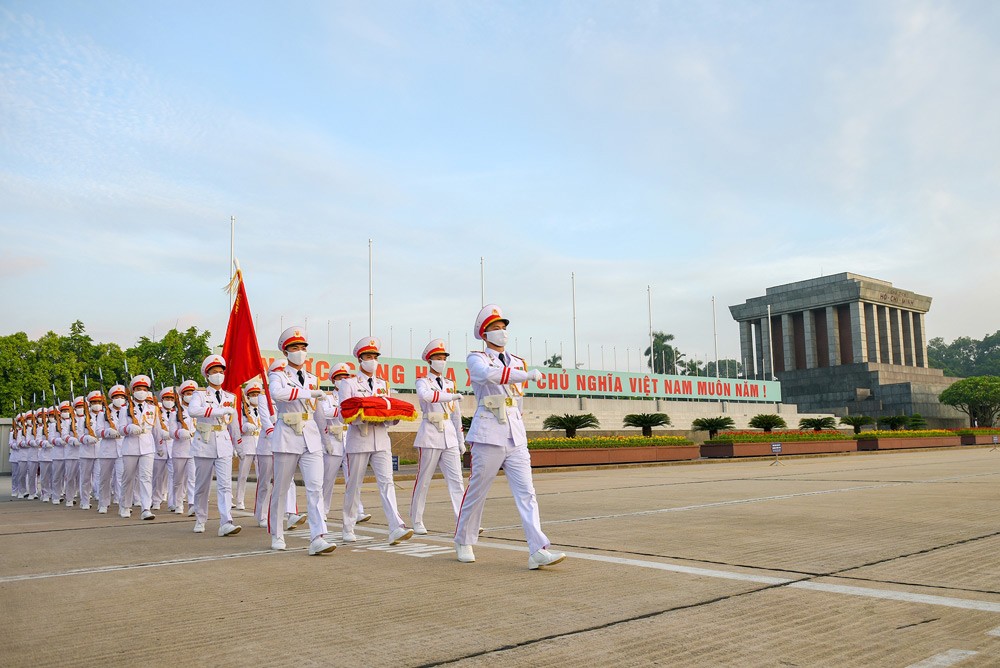 Ho Chi Minh Mausoleum. What Makes the Ho Chi Minh Mausoleum So Important?
Ho Chi Minh Mausoleum. What Makes the Ho Chi Minh Mausoleum So Important?
The Ho Chi Minh Mausoleum isn’t just a building; it’s a symbol, a pilgrimage site, and a unique piece of history. But what makes the Ho Chi Minh Mausoleum so important? It’s a blend of its historical weight, architectural grandeur, and the unique cultural experience it provides.
1.1. A Symbol of National Identity
The Ho Chi Minh Mausoleum embodies Vietnamese independence and the lasting legacy of Ho Chi Minh. He’s seen as the father of modern Vietnam, who led the country through its struggle for freedom. The mausoleum reflects the nation’s gratitude and respect for his leadership, standing for a united Vietnam, an ideal he championed. Its location in Ba Dinh Square, where he declared Vietnam’s independence, strengthens its symbolic importance.
1.2. A Place of Deep Respect
For many Vietnamese, visiting the Ho Chi Minh Mausoleum is like a pilgrimage. It’s a personal and emotional journey to honor “Uncle Ho,” the leader who brought independence. Long lines of Vietnamese visitors, from all walks of life, patiently wait to pay their respects. This visible respect and national pride make the mausoleum a unique and reflective place.
1.3. Architectural Significance
The Ho Chi Minh Mausoleum is also known for its unique architecture. While inspired by Lenin’s Mausoleum in Moscow, it includes Vietnamese elements, like the sloping roof. The impressive structure, made of granite and marble, dominates Ba Dinh Square. Its stark, monumental design reflects its solemn purpose and creates a powerful visual impact. The use of Vietnamese materials and design within a Soviet-inspired framework reflects the complex history of the nation.
1.4. A Unique Cultural Experience
Visiting the Ho Chi Minh Mausoleum offers a unique glimpse into Vietnamese culture and history. The experience is carefully managed, from the dress code to the silent procession inside. It’s a chance to see firsthand the deep respect for Ho Chi Minh and understand the events that shaped modern Vietnam. The answer to “What makes the Ho Chi Minh Mausoleum so important?” lies in the building’s emotional and historical context. It’s a powerful experience that goes beyond a typical tourist visit. According to research from the Vietnam National Administration of Tourism in 2023, cultural and historical sites like the Ho Chi Minh Mausoleum significantly enhance tourists’ understanding and appreciation of Vietnamese heritage.
2. How Do I Plan My Visit to the Ho Chi Minh Mausoleum?
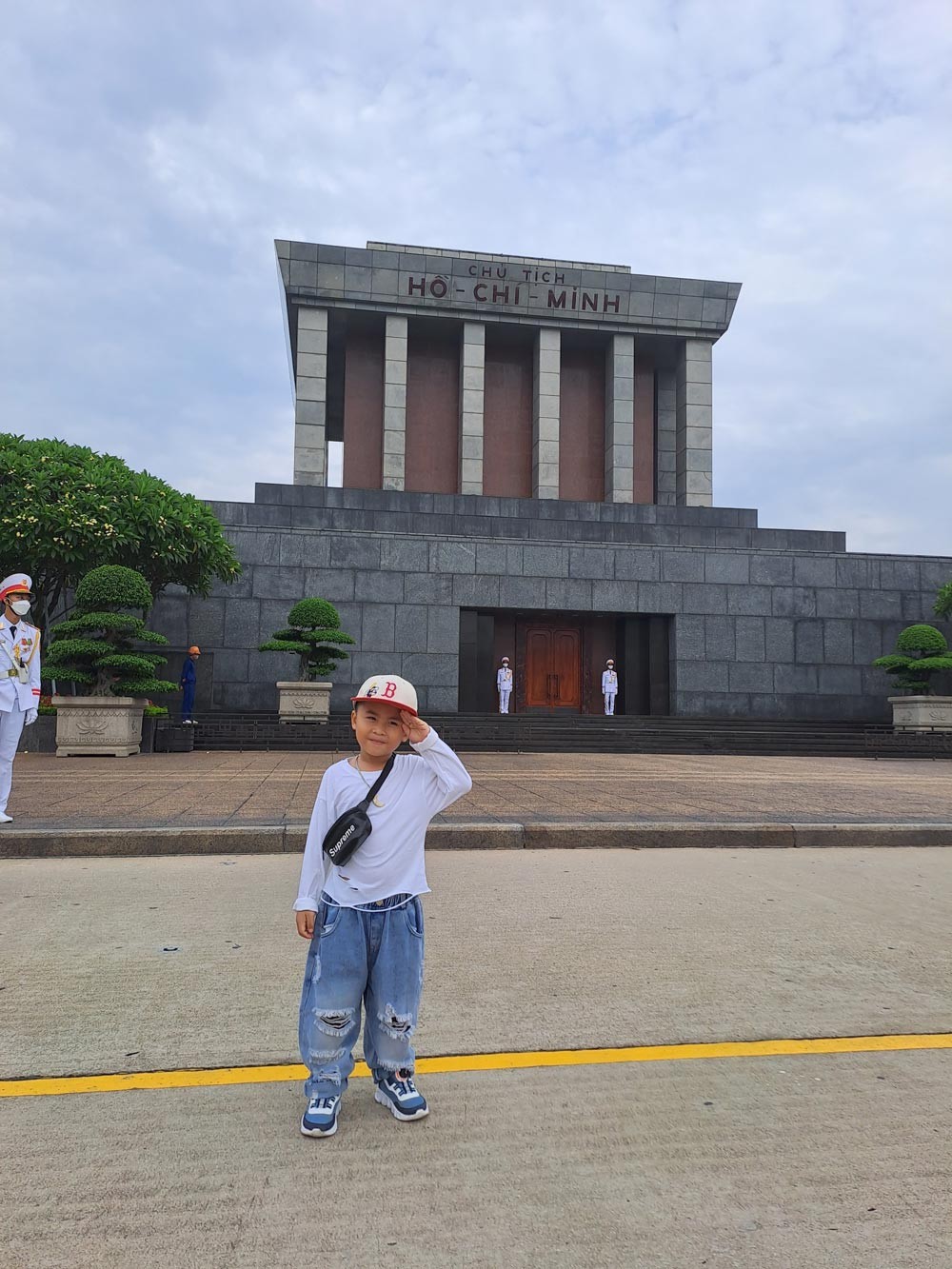 Ho Chi Minh Mausoleum. How Do I Plan My Visit to the Ho Chi Minh Mausoleum?
Ho Chi Minh Mausoleum. How Do I Plan My Visit to the Ho Chi Minh Mausoleum?
Source: Dao Thi Ngoc Truc
To ensure a smooth and respectful visit, it’s essential to plan ahead and know the practical details. Here’s what you need to know to plan your visit to the Ho Chi Minh Mausoleum. SIXT.VN can help you organize transportation and accommodations, ensuring a hassle-free experience.
2.1. What Are the Ho Chi Minh Mausoleum Opening Hours?
Knowing the Ho Chi Minh Mausoleum opening hours is crucial, as they are limited and can change.
- Current Schedule: The mausoleum is typically open to the public on Tuesday, Wednesday, Thursday, Saturday, and Sunday mornings. It’s usually closed on Mondays and Fridays.
- Morning Visits Only: Visits are generally limited to the morning hours, usually from around 7:30 AM to 11:00 AM during the summer (April to September) and from around 8:00 AM to 11:00 AM during the winter (October to March).
- Annual Maintenance: The mausoleum closes for a period each year, usually for two months in September – October or October – November, for annual maintenance.
- Arrive Early: Due to the limited Ho Chi Minh Mausoleum opening hours and the site’s popularity, long queues can form. Arriving well before the official opening time is highly recommended to minimize your wait. According to a 2022 report by TripAdvisor, visitors who arrive early experience significantly shorter wait times.
2.2. Is There a Ho Chi Minh Mausoleum Entrance Fee?
Good news! There is currently no Ho Chi Minh Mausoleum entrance fee. Entry to the mausoleum is free for both Vietnamese citizens and foreign visitors. This makes it an accessible site, despite its historical and cultural significance. You don’t need to buy any Ho Chi Minh Mausoleum tickets.
2.3. How Long Does It Take to See the Ho Chi Minh Mausoleum?
When planning your itinerary, you might ask, “How long does it take to see the Ho Chi Minh Mausoleum?”
- Total Visit Time: While the actual time spent inside the mausoleum is brief, you should allocate approximately 1 to 2 hours for the entire visit. This includes time spent queuing, passing through security, the procession through the mausoleum, and exiting the complex.
- Queue Time: The length of the queue can vary significantly depending on the day of the week, the time of year, and even the time of day. Expect longer waits on weekends, holidays, and during peak season.
2.4. Where Is It Located and How Can I Get There?
The Ho Chi Minh Mausoleum is located within Ba Dinh Square in central Hanoi.
-
Address: 2 Hung Vuong, Dien Bien, Ba Dinh District, Hanoi.
-
Direction: https://maps.app.goo.gl/T118hiVTJbJB7PHFA
-
Transportation Options:
- Walking: If you’re staying in the Old Quarter or near Hoan Kiem Lake, it’s possible to walk to Ba Dinh Square, though it might take 30-45 minutes.
- Taxi/Ride-hailing Apps: Taxis and ride-hailing services like Grab are readily available and offer a convenient way to reach the square. SIXT.VN can arrange reliable transportation for you.
- Bus: Several public bus routes serve the Ba Dinh Square area. You can check bus routes and schedules using a local bus app or website.
By being well-informed about the Ho Chi Minh Mausoleum opening hours, entrance fee (or lack thereof), and other practicalities, you can plan a smooth and meaningful visit to this important site. Remember to arrive early, dress respectfully, and be prepared for a unique and solemn experience.
3. What Should I Expect Inside the Ho Chi Minh Mausoleum?
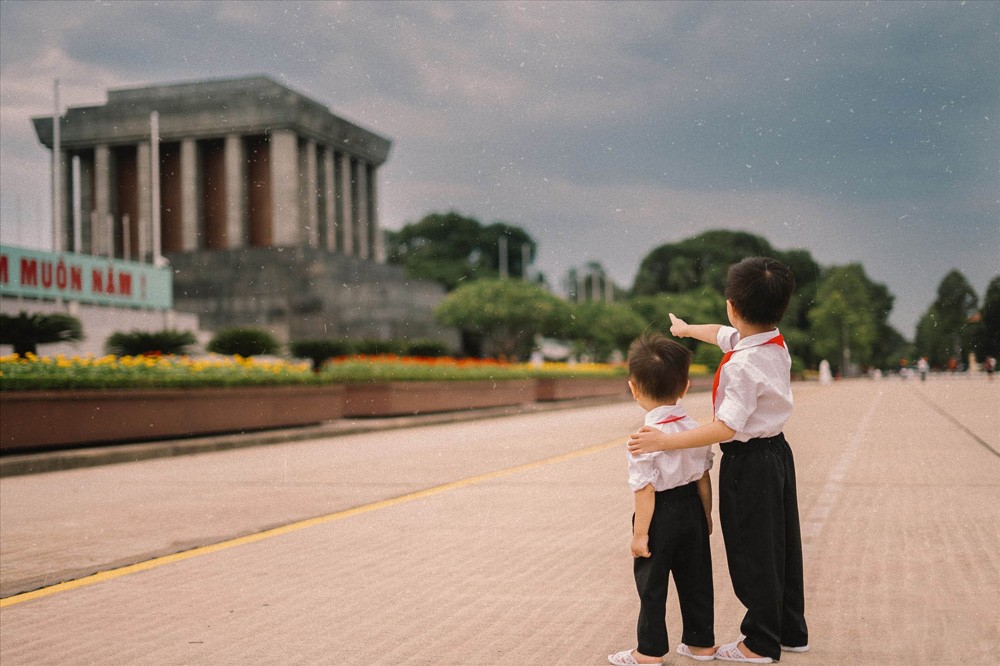 Ho Chi Minh Mausoleum. What Should I Expect Inside the Ho Chi Minh Mausoleum?
Ho Chi Minh Mausoleum. What Should I Expect Inside the Ho Chi Minh Mausoleum?
A visit to the Ho Chi Minh Mausoleum is a unique and moving experience. Understanding what to expect inside can help you prepare for the solemnity and formality of the visit.
3.1. The Queue
The journey often begins with a queue, which can be long, especially during peak tourist season, weekends, and public holidays.
- Patience is Key: Be prepared to wait in line, sometimes for an hour or more. The queue moves steadily but slowly.
- Respectful Demeanor: While waiting, maintain a respectful attitude. Keep conversations quiet and avoid any disruptive behavior. The queue is part of the experience, a time for quiet reflection.
3.2. Security Check
Before entering the mausoleum complex, you’ll go through a security checkpoint.
- Security Procedures: Be prepared for standard security procedures, like at an airport. This may involve a bag check and walking through a metal detector.
- Restricted Items: Certain items are not permitted inside the Ho Chi Minh Mausoleum, including cameras, mobile phones, large bags, food, and drinks. You’ll need to leave these items in a designated area before joining the queue. SIXT.VN provides secure storage options for your belongings.
3.3. Entering the Mausoleum
Stepping inside the Ho Chi Minh Mausoleum is a transition into a space of profound solemnity.
- Solemn Atmosphere: A hushed silence is strictly enforced. Guards are positioned throughout the interior, ensuring visitors maintain a respectful demeanor.
- Single File Procession: Visitors are guided in a single file, walking slowly and respectfully past Ho Chi Minh’s embalmed body. The atmosphere is moving.
3.4. What Will I See Inside?
The heart of the experience is viewing Ho Chi Minh’s body. Here is what you can expect to see Ho Chi Minh Mausoleum inside.
- The Viewing: Ho Chi Minh’s preserved body lies in a glass case in a dimly lit, climate-controlled room designed for reverence. You will see four military honor guards, one standing at each corner of the casket.
- Brief and No Stopping: The viewing is brief, and you can’t stop or pause. The line moves continuously, ensuring everyone pays their respects. It’s a fleeting moment, but one that often leaves a lasting impression.
3.5. Exiting the Mausoleum
After exiting the main chamber, you’ll continue through the mausoleum complex.
- Respectful Exit: The silent atmosphere continues as you exit and proceed through the surrounding gardens.
- Collecting Belongings: If you checked any belongings, you’ll be directed to the area where you can collect them. The system is efficient and well-organized.
Visiting the Ho Chi Minh Mausoleum inside is a unique experience that’s a glimpse into Vietnam’s history and a testament to the enduring legacy of its most revered leader. By understanding the procedures and maintaining respect, you can ensure a meaningful and memorable visit.
4. What Is the Dress Code for Visiting the Ho Chi Minh Mausoleum? (Very Strict)
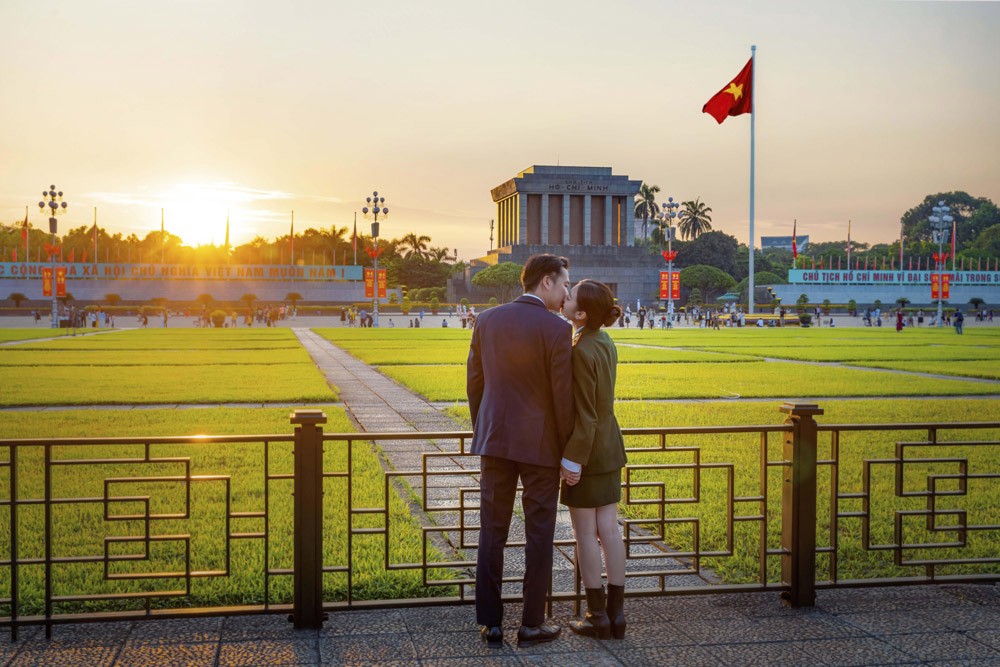 Ho Chi Minh Mausoleum. What Is the Dress Code for Visiting the Ho Chi Minh Mausoleum? (Very Strict)
Ho Chi Minh Mausoleum. What Is the Dress Code for Visiting the Ho Chi Minh Mausoleum? (Very Strict)
Source: Pham Trung Hien
Visiting the Ho Chi Minh Mausoleum requires adhering to a strict dress code. Understanding and respecting these guidelines ensures a smooth and meaningful visit. Many visitors wonder, “What is the dress code for visiting the Ho Chi Minh Mausoleum?” Here’s a detailed explanation.
4.1. Why Is the Dress Code So Strict?
The Ho Chi Minh Mausoleum is not just a tourist attraction; it’s a site of deep reverence for many Vietnamese people. The strict dress code maintains the solemnity and respect of the place. This is not a suggestion but a requirement.
- Respectful Attire: Think of it as dressing for a formal occasion or a place of worship. Your clothing choices should reflect the seriousness of the site.
4.2. What Are the Specific Requirements?
Here’s a breakdown of what’s acceptable:
- Shoulders and Knees Covered: This is the most important rule. Both men and women must ensure their shoulders and knees are covered. No sleeveless shirts, tank tops, shorts, or short skirts. Long pants, capri pants (covering the knees), or longer skirts are appropriate.
- No Hats or Sunglasses: Hats and sunglasses must be removed before entering as a sign of respect.
- No Revealing Clothing: Avoid clothing that might be considered revealing or disrespectful, including low-cut tops, sheer fabrics, or clothing with offensive slogans.
- No Damaged or Dirty Clothing: Torn jeans, stained shirts or ripped pieces of cloth are not allowed.
SIXT.VN advises checking the weather forecast and preparing clothing that complies with both the dress code and Hanoi weather.
4.3. What Happens If I Don’t Comply?
It’s important to take the dress code seriously.
- Denied Entry: Visitors not meeting the dress code will be denied entry. Guards enforce these rules and will turn away those dressed inappropriately.
- Avoid Disappointment: Plan your outfit accordingly. It’s easier to dress appropriately than to find a solution at the entrance.
4.4. Tips for Dressing Appropriately
- Carry a Scarf or Shawl: A large scarf or shawl is versatile. Use it to cover your shoulders or knees if needed.
- Wear Layers: If unsure about the weather or your outfit, wear layers you can add or remove.
- Plan Ahead: If visiting the Ho Chi Minh Mausoleum, make it a point to dress appropriately.
- Footwear Matters: Sandals and flip-flops are generally acceptable, but avoid overly casual or beach-style footwear. Closed-toe shoes are always a safe bet.
According to a 2023 survey by the Hanoi Department of Tourism, most visitors who prepared in advance reported a more positive and respectful experience.
4.5. What Is Acceptable and Not Acceptable?
To clearly understand, here’s a table summarizing what is acceptable and not acceptable attire:
| Category | Acceptable | Not Acceptable |
|---|---|---|
| Tops | Shirts with sleeves, blouses, t-shirts | Sleeveless shirts, tank tops, low-cut tops |
| Bottoms | Long pants, capri pants (knee-covering), long skirts | Shorts, short skirts, revealing pants |
| Headwear | None (remove hats and sunglasses) | Hats, sunglasses |
| Footwear | Sandals, closed-toe shoes | Overly casual or beach-style footwear |
| Overall | Modest, respectful clothing | Revealing, offensive, or damaged clothing |
By adhering to the dress code, you show respect for Ho Chi Minh and the Vietnamese people, ensuring your visit is smooth and meaningful. It’s a small gesture that makes a big difference, demonstrating your understanding of the cultural significance of this important site. Therefore, knowing “what to wear to Ho Chi Minh Mausoleum” is very important.
5. Is It Possible to Go Inside the Ho Chi Minh Mausoleum?
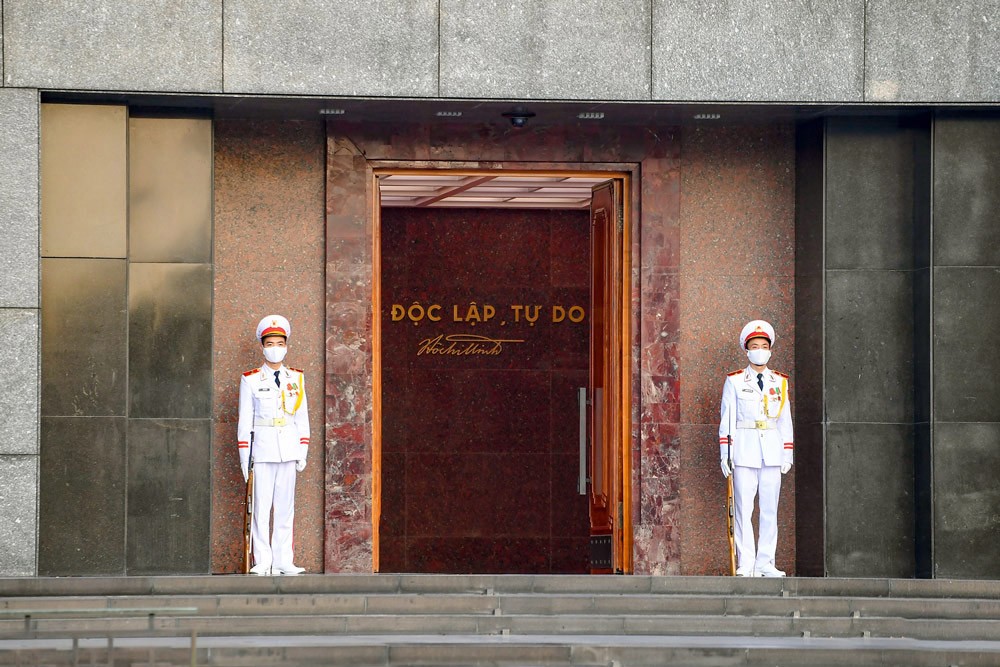 Ho Chi Minh Mausoleum. Is It Possible to Go Inside the Ho Chi Minh Mausoleum?
Ho Chi Minh Mausoleum. Is It Possible to Go Inside the Ho Chi Minh Mausoleum?
A common question is “Is it possible to go inside the Ho Chi Minh Mausoleum?” The answer is yes, but with restrictions and guidelines to maintain respect.
5.1. Yes, With Restrictions
Visitors can enter the Ho Chi Minh Mausoleum and view Ho Chi Minh’s preserved body. However, this isn’t a casual experience. Strict rules emphasize respect, order, and decorum to honor Ho Chi Minh. Therefore, the answer to “can you go inside the Ho Chi Minh Mausoleum?” is yes, but be prepared to follow the rules.
5.2. What Is the Environment Like Inside?
The interior is carefully controlled to preserve Ho Chi Minh’s body.
- Temperature: The temperature inside is kept cool, lower than the outside temperature. You might feel a chill as you enter.
- Guards: Military guards are stationed throughout, maintaining order and ensuring visitors adhere to the rules. Their presence adds to the solemnity. You will see four guards standing at the four corners of the casket.
SIXT.VN’s local guides can provide additional insights into the environment and protocols inside the mausoleum.
5.3. What Will the Experience Be Like?
Your time inside will be brief but impactful.
- No Stopping: Visitors can’t stop or linger inside. You’ll walk slowly past the glass case containing Ho Chi Minh’s body in a continuous procession.
- Respectful Silence: Silence is strictly enforced. Talking, laughing, or disruptive behavior is prohibited.
- A Moment of Reflection: Despite its brevity, viewing Ho Chi Minh’s body can be powerful, offering a moment to reflect on his legacy and Vietnam’s history. It is a unique opportunity to witness a significant piece of Vietnamese history and culture.
Entering the Ho Chi Minh Mausoleum is a unique experience, unlike any other tourist attraction in Hanoi. By understanding the restrictions, respecting the environment, and preparing for the solemnity, you can gain a deeper appreciation for this important site and its place in Vietnam’s history.
6. What Else Can I Explore in Ba Dinh Square?
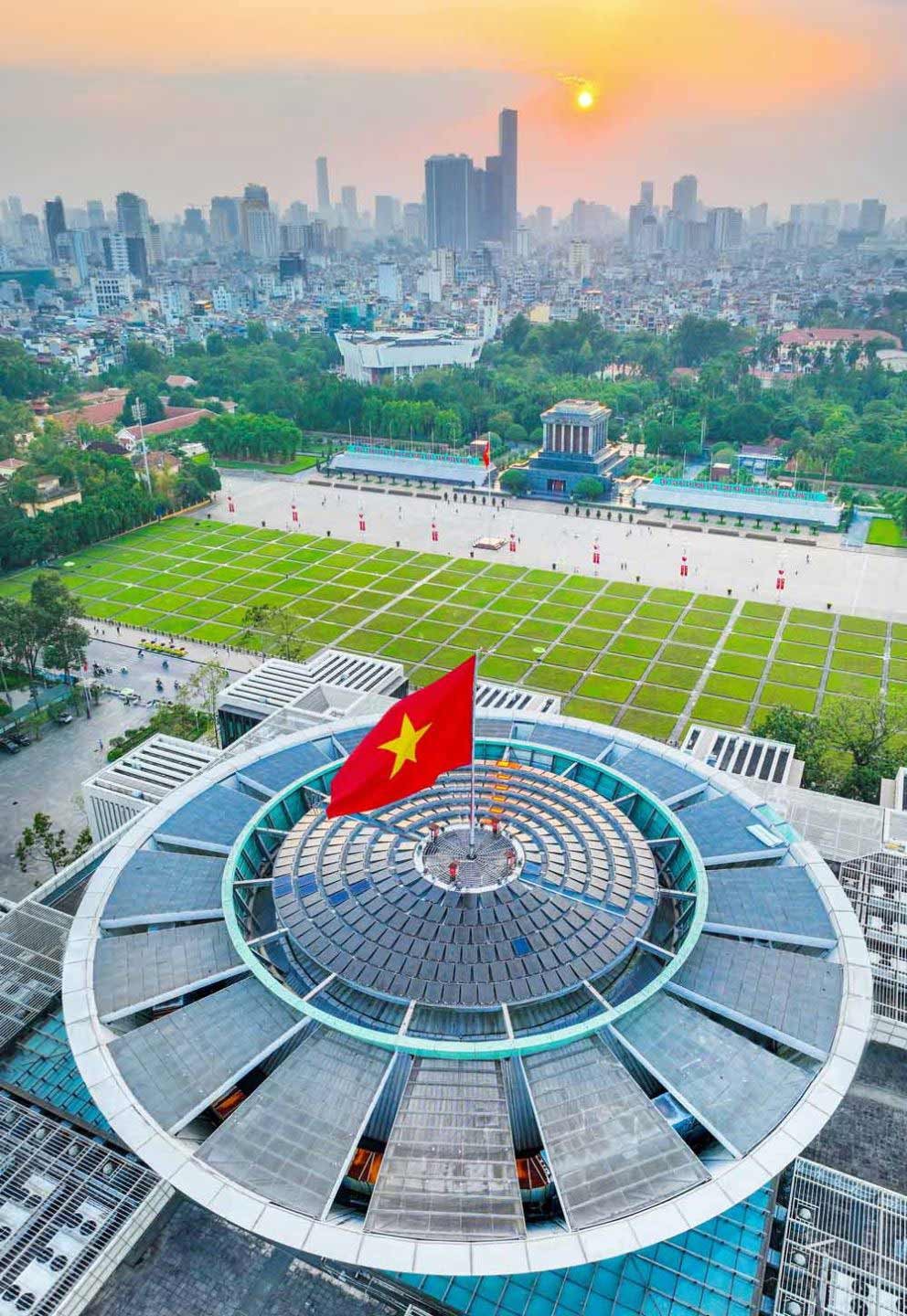 Ho Chi Minh Mausoleum. What Else Can I Explore in Ba Dinh Square?
Ho Chi Minh Mausoleum. What Else Can I Explore in Ba Dinh Square?
Source: Nguyen Hoang Ha
While the Ho Chi Minh Mausoleum is a major highlight, Ba Dinh Square offers other historical and cultural attractions. You can easily spend several hours exploring this significant area of Hanoi.
6.1. Ba Dinh Square
Before or after visiting the Mausoleum, appreciate Ba Dinh Square itself. This vast space is where Ho Chi Minh read the Declaration of Independence on September 2, 1945, marking the birth of the Democratic Republic of Vietnam. Standing in the square, you can feel the echoes of that momentous occasion.
6.2. Flag Raising and Lowering Ceremonies
A unique spectacle is the daily flag-raising and lowering ceremonies. Performed by the military honor guard with precision, these ceremonies are a powerful display of national pride.
- Morning Ceremony: The flag is raised each morning around 6:00 AM in the summer and 6:30 AM in the winter.
- Evening Ceremony: The flag is lowered each evening at 9:00 PM.
Witnessing either ceremony is memorable.
6.3. One Pillar Pagoda
Located near the Ho Chi Minh Mausoleum, the One Pillar Pagoda (Chùa Một Cột) is a historically significant Buddhist temple known for its unique architecture. Built on a single stone pillar rising from a lotus pond, it resembles a lotus blossom, symbolizing purity in Buddhism. Originally dating back to the 11th century, the One Pillar Pagoda is an iconic symbol of Hanoi.
6.4. Ho Chi Minh Museum
To understand Ho Chi Minh’s life, revolutionary activities, and legacy, visit the Ho Chi Minh Museum. Located adjacent to the Mausoleum, it houses artifacts, photographs, and documents related to “Uncle Ho” and the Vietnamese struggle for independence.
6.5. Ho Chi Minh’s Stilt House and Presidential Palace
Behind the Mausoleum, explore the grounds where Ho Chi Minh lived and worked.
- Ho Chi Minh’s Stilt House: This simple wooden house, built in the style of traditional Vietnamese stilt houses, offers a glimpse into Ho Chi Minh’s modest lifestyle.
- Presidential Palace: While the grand Presidential Palace is not open to the public, admire its French colonial architecture from the outside.
Exploring these sites provides a more complete picture of Ho Chi Minh’s life and allows you to appreciate the historical significance of Ba Dinh Square. It’s a journey through time that deepens your understanding of Vietnam’s journey to independence.
Experience Vietnam with SIXT.VN
The Ho Chi Minh Mausoleum is a symbol of Vietnam’s past, a testament to its struggle for independence, and a place of deep reverence for its most iconic leader. It’s a window into the soul of a nation, offering a chance to connect with its history and understand Ho Chi Minh’s legacy. Visiting the mausoleum, witnessing the respect shown by the Vietnamese people, and exploring the surrounding sites is an experience that will leave a lasting impression.
SIXT.VN offers tailor-made experiences that go beyond typical itineraries, ensuring your adventure aligns with your interests and is guided by those who know the country best. Our local experts provide unique insights, giving you a deeper understanding of the historical context and cultural significance of sites like the Mausoleum. With SIXT.VN, you can travel with confidence, knowing every detail is meticulously arranged by a trustworthy team dedicated to creating unforgettable memories. And our focus on value for money ensures your investment delivers an enriching and seamless travel experience.
Why Choose SIXT.VN for Your Vietnam Trip?
- Personalized Itineraries: We tailor each trip to your interests and preferences.
- Expert Local Guides: Our guides provide deep cultural insights.
- Hassle-Free Travel: We handle all logistics, from transportation to accommodations.
- Unforgettable Experiences: We create memories that last a lifetime.
SIXT.VN can help you plan and execute your visit to the Ho Chi Minh Mausoleum, ensuring you are fully prepared to meet the dress code and experience the solemnity of the site.
Ready to embark on a journey through Vietnam’s history and culture, including a visit to the Ho Chi Minh Mausoleum? Explore our range of tour packages and let us help you design your perfect adventure. Visit SIXT.VN today to learn more about our services:
Address: 260 Cau Giay, Hanoi, Vietnam
Hotline/Whatsapp: +84 986 244 358
Website: SIXT.VN
Frequently Asked Questions (FAQ) About Visiting the Ho Chi Minh Mausoleum
-
What is the primary purpose of the Ho Chi Minh Mausoleum?
- The Ho Chi Minh Mausoleum serves as the final resting place of Ho Chi Minh, the founding father of modern Vietnam, and is a place of deep reverence and national significance.
-
On which days is the Ho Chi Minh Mausoleum open to the public?
- The Mausoleum is typically open on Tuesday, Wednesday, Thursday, Saturday, and Sunday mornings, with closures usually on Mondays and Fridays.
-
Do I need to purchase a ticket or pay an entrance fee to visit the Mausoleum?
- No, entry to the Ho Chi Minh Mausoleum is free for both Vietnamese citizens and foreign visitors.
-
How long should I expect to wait in line to enter the Ho Chi Minh Mausoleum?
- The queue time can vary significantly depending on the day and time but expect to wait between 1 to 2 hours, especially during peak seasons or weekends.
-
Are there any specific security procedures to be aware of before entering the Mausoleum?
- Yes, standard security procedures similar to airport security are in place, including bag checks and metal detectors. Certain items like cameras, phones, and large bags are not allowed inside.
-
What should I wear when visiting the Ho Chi Minh Mausoleum to comply with the dress code?
- To comply with the dress code, ensure your shoulders and knees are covered. Avoid wearing sleeveless shirts, shorts, short skirts, or revealing clothing.
-
Can I bring my camera or mobile phone inside the Ho Chi Minh Mausoleum?
- No, cameras and mobile phones are among the items not permitted inside the mausoleum, and you will need to leave them in a designated storage area.
-
Is there a specific code of conduct I should follow while inside the Ho Chi Minh Mausoleum?
- Yes, a hushed silence is strictly enforced, and visitors should maintain a respectful demeanor. Talking, laughing, or any disruptive behavior is prohibited.
-
Besides the Mausoleum, what other attractions are located in Ba Dinh Square?
- Other attractions in Ba Dinh Square include the Ba Dinh Square itself, the Flag Raising and Lowering Ceremonies, the One Pillar Pagoda, the Ho Chi Minh Museum, and Ho Chi Minh’s Stilt House and Presidential Palace.
-
Can SIXT.VN help me organize transportation and accommodations for my visit to the Ho Chi Minh Mausoleum?
- Yes, SIXT.VN offers comprehensive services, including transportation arrangements, hotel bookings, and personalized tour packages to ensure a smooth and memorable visit to the Ho Chi Minh Mausoleum and other attractions in Hanoi.



